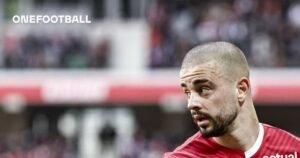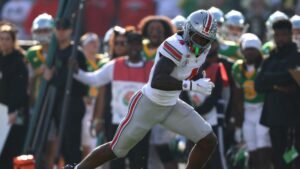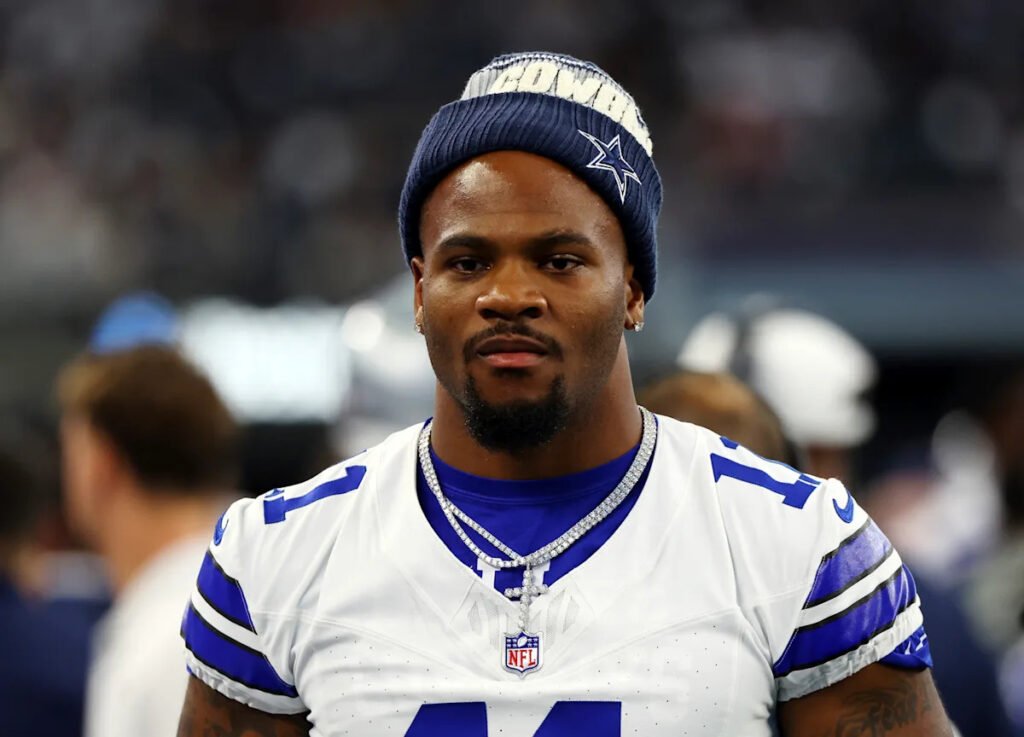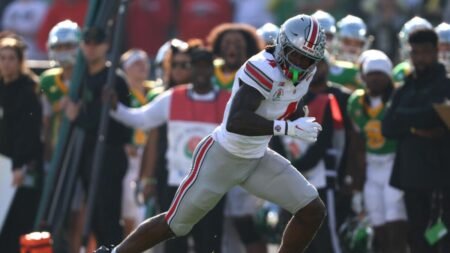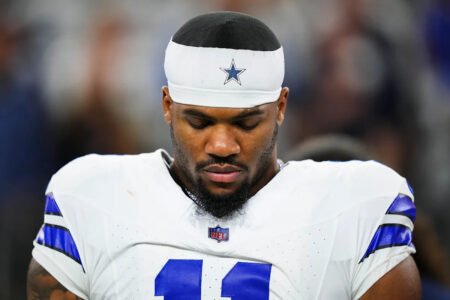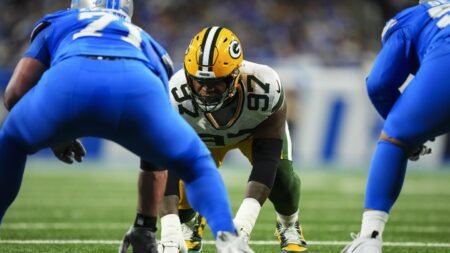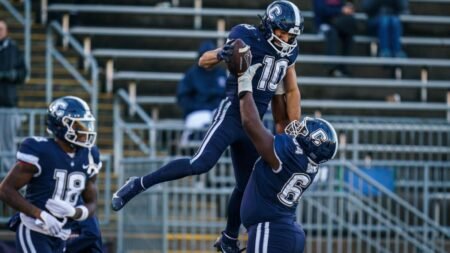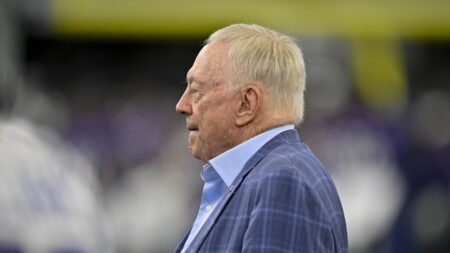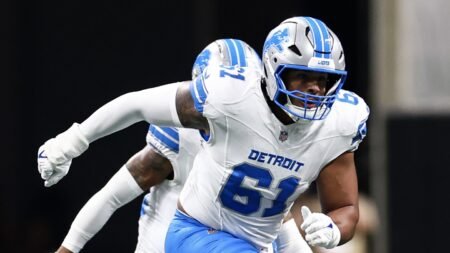In the year 2025, Dallas saw Micah Parsons and Dončić, two future Hall of Fame talents, leave town at the ripe age of 26. And not just leave town, but escorted out via trade.
On Feb. 2, Dončić was sent to the Los Angeles Lakers in arguably the most shocking trade in NBA history. And on Thursday, Parsons was dealt to the Green Bay Packers after a month of bad blood with team owner Jerry Jones.
Advertisement
It doesn’t matter how justifiable move was from a front office perspective, how bad some relationships had devolved. That’s going to hurt for any fanbase that had been planning to watch those superstars lead their team for another decade.
Of course, despite the nearly identical broad strokes, there are some key differences to what could go down as the two most infamous trades in Dallas history. Let’s break down all the similarities and differences in a painful year for North Texas.
Similar: Both players had a bad relationship with management
Tensions had been simmering for Parsons and Jones for months amid unproductive contract extension negotiations, but reached a boil at the start of August when Parsons announced he was requesting a trade.
Advertisement
Few expected the Cowboys to actually do it. And yet, looking back on how it all played out, maybe it shouldn’t have been a surprise. Jones was airing out his grievances on a nearly daily basis at Cowboys training camp and eventually reached the point where he was complaining how involved Parsons’ agent David Mulugheta (who seems to be coming out of this quite well) was in the process.
Whenever an owner and GM is starting to float just how unhelpful a player’s agent is, you know things are going badly. Jones seem fixated on getting the Parsons camp to honor an alleged handshake deal he made with Parsons in a 1-on-1 meeting in March, refusing to accept that Mulugheta, the guy Parsons hired to negotiate this exact deal, said no. None of this endeared him to Parsons, who wiped the Cowboys from his social media channels in response.
Micah Parsons got his trade request granted. Luka Dončić never requested a trade. (AP Photo/Richard W. Rodriguez)
(ASSOCIATED PRESS)
Meanwhile, it has since come out that Dončić and Mavericks general manager Nico Harrison didn’t exactly see eye-to-eye. Yes, the Slovenian was the marquee player, but he and Harrison reportedly clashed over the executive’s handling of the Mavericks training staff, Dončić’s timeline to return from an injury and his conditioning in general.
Advertisement
Harrison eventually decided that his best path to success was trading Dončić for an established talent in Anthony Davis. It remains to be seen how that will work out for him, though he got a huge boost by winning the Cooper Flagg lottery.
Different: How publicly the drama played out
When we say the Dončić trade might have been the most shocking trade ever, we mean it. No one saw the move coming, from the casual fans to the minority owner of the team. As far as almost everyone knew, Dončić was happy in Dallas and a lock to sign a supermax extension in a year or two. Instead, he was sent west in the dead of night.
Comparatively, the only surprise with Parsons is that Jones actually granted the trade request after insisting that his heels were dug in. Jones has been in these situations before and come out with a contract, just usually more expensive than it needed to be.
Advertisement
We knew it was bad. The trade just served as confirmation.
The public nature of the dispute also meant Jones got to talk with any suitor interested in his disgruntled star. Harrison, however, caught plenty of flak for seemingly only speaking with the Lakers and not even trying to start a bidding way for a player who could have commanded a king’s ransom.
Similar: Neither Dallas team got mindblowing returns
For Dončić, the Mavericks got Anthony Davis, Max Christie and a 2029 first-round pick, while also sending out the negligibly valuable Maxi Kleber and Markieff Morris.
For Parsons, the Cowboys got two first-round picks and defensive lineman Kenny Clark, who is a solid run-stopper but was also looming as a possible cut candidate next offseason.
Advertisement
When you trade away a superstar in their prime, the fanbase is going to expect a return that at least makes the other team’s fanbase uncomfortable. Try and find a Lakers or Packers who is second-guessing the moves right now.
Different: The Mavericks had just reached an NBA Finals, the Cowboys… didn’t
What made the Dončić trade so unbelievable, in both the moment and the aftermath, was that Harrison looked at his superstar and decided the team was more likely to win a championship without him, about eight months after Dončić led the Mavericks to the NBA Finals, where they lost to the Boston Celtics.
The Cowboys would love to get that far. They haven’t, for quite some time. The team still hasn’t even reached the NFC championship game since its last Super Bowl title in 1995.
Advertisement
The two teams are in somewhat different places right now, but seemed to both take a bizarre route to relevance with their big trades. The Mavericks blew up a core that just reached the Finals to win now, adding the 32-year-old Davis rather than seeing what they could keep doing with the 26-year-old Dončić. The Cowboys traded their best player at a time when they should theoretically be contending and basically got picks and a decent veteran for him.
Accordingly…
Similar: Both fanbases are livid
We really don’t need to explain much here. The list of Dallas fans who are happy they will no longer be watching Dončić and Harrison is going to be vanishingly short. Even shorter will be the fans happy that Harrison has consolidated his power and Jones didn’t have to cave at the negotiating table with his best draft pick of a generation.
Advertisement
Different: Micah Parsons financially benefited from this, Luka Dončić did not
The Parsons trade was simultaneously reported with the news that the Packers were giving him a four-year, $188 million contract with $120 million fully guaranteed. It is easily the largest contract in the history of NFL players who do not play the quarterback position.
The Lakers, meanwhile, were unable to speak with Dončić about an extension due to the clandestine nature of the talks, so much so the Mavericks reportedly had to lower their price. That ended up not mattering much thanks to the limited nature of NBA contracts, as Dončić signed a three-year, $165 million extension in August.
Advertisement
The trade cost Dončić plenty of money, though, as it made him no longer eligible for a supermax contract. Had he remained in Dallas, he could have signed a five-year, $346 million deal this offseason.
Similar: Both players could be inner-circle Hall of Famers
It really needs to be said. Dončić and Parsons aren’t just stars, they are foundational pieces that come along very rarely.
Dončić opened his NBA career with five straight first-team All-NBA selections. Parsons opened his career with four straight Pro Bowl selections and would have been a four-time All-Pro if he stayed healthy. Dončić is a generational scoring engine who only needs a competent supporting cast to produce an elite offense. Parsons is an elite pass-rusher who can also drop back into coverage and ruin a run play.
Advertisement
Replacing them on a one-to-one basis is next to impossible. Both teams will hope they can do it in the aggregate.
Almost immediately after the trade was reported, Parsons had this ready to go, as well as a lengthy statement saying goodbye to Cowboys fans.
That is a man ready to leave Dallas.
Dončić had no such advance warning. He did not request a trade and by all accounts expected to play his entire career in Dallas. His reaction came out in a trickle, though his father was angry enough we could probably guess how unhappy he was behind closed doors.
Read the full article here

